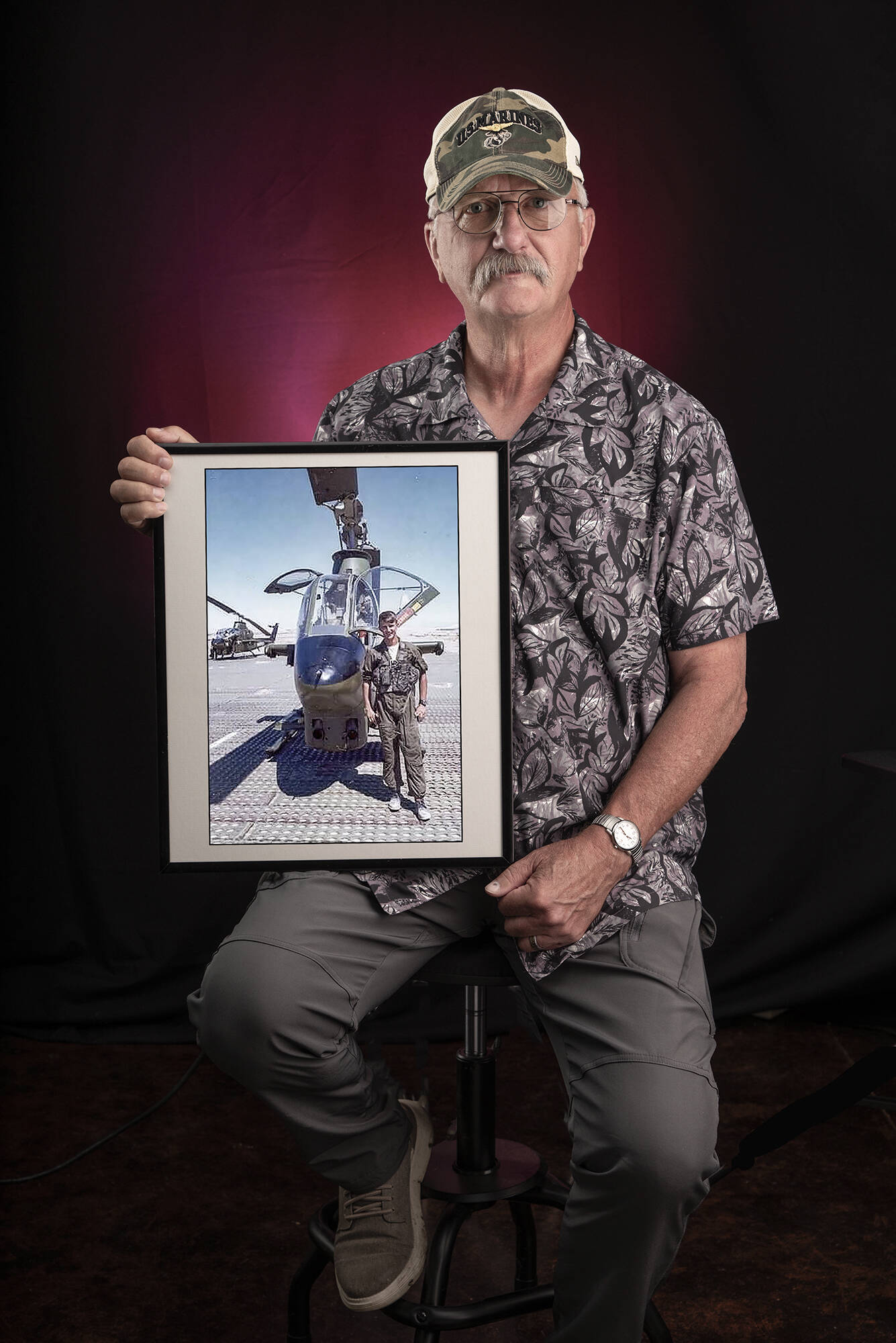Known for his photography of interesting beards and indigenous cultures, Mike Holtby recently turned his camera’s focus to something new – Vietnam veterans.
Earlier this year, Holtby partnered with the Whidbey Veterans Resource Center to photograph the men and women who served in the Vietnam War. So far, seven Whidbey residents have posed for a portrait in his studio.
Like his subjects, Holtby hails from the same generation. Early on in the conflict, he had a wife and infant daughter to support, so he was exempted from service.
“I think if I had been single, I would have gone, and like my high school friends I probably would have gone to Officer Candidate School or become a medic, and those guys are the ones most likely to get killed over there,” he said.
For some, it was an experience more horrific than heroic. One of Holtby’s friends who served came home with very serious post-traumatic stress disorder. He never recovered and ended up taking his own life.
Holtby, who is a retired psychotherapist, said a large percentage of people returned with PTSD. Some of the participants in his recent photography project reported they were in therapy for a number of years. Others had feelings of guilt simply for surviving the conflict.
“One person talked about how he felt guilty that he lived, when people around him, people he was close to, died,” Holtby said. “And that’s a common reaction.”
On top of that, when they returned home from the war, they did not receive a warm welcome. Vietnam veterans were often spit on and called baby killers, among other things.
“I think that’s part of the tragedy of this situation is that no one really acknowledges the experience that these guys had, and is willing to listen to what they went through,” Holtby said.
He sat down with each of his portrait subjects and let them tell their stories about the war. Every participant was required to bring an old photo of themselves while serving in the conflict.
“I’ve told them to tell me what they’re comfortable with,” Holtby said. “It could be about when they’re there, their experience when they return home, or both. Sometimes it’s about how they got to Vietnam in the first place. That part has been very interesting.”
In Terry Katzakian’s photo, he stands beside a large utility vehicle. As a cryptanalyst, Katzakian had top security clearance and worked to decipher encoded radio transmissions sent by the enemy.
“We got attacked with rockets by occasion, but we were basically a non-combat unit,” the Clinton resident said.
He enlisted in the Army Security Agency, a signals intelligence branch, and was stationed in Phu Bai, serving from February 1967 to August 1968.
Bob Gabelein, also of South Whidbey, said he was a “tail end Charlie.”
“I was supposed to go overseas in ‘73, but the ceasefire came and my orders were canceled,” he said.
Instead, he was there in 1975, just in time for Operation Eagle Pull, the aerial evacuation of Phnom Penh, and Operation Frequent Wind, which was the final phase in the evacuation of American civilians and at-risk Vietnamese from Saigon during the last days of the war.
Both operations went on to set a record for the largest helicopter evacuation to date.
During that time, Gabelein served as a Marine door gunner. A 1972 graduate of Langley High School, he enlisted in the middle of his senior year.
In Grethe Cammermeyer’s photo she brought to the shoot, she is receiving a Bronze Star, a distinction she received for her service.
“As a woman, having served in Vietnam, I think our visibility is important,” she said. “You don’t do that by just staying home.”
Cammermeyer joined the military while she was in college, serving as a combat head nurse in Vietnam from 1967 to 1968, which included the Tet Offensive. More than 50% of the casualties of the war occurred while she was there.
“As a nurse, there was no place more important than for me to be sent to Vietnam taking care of the American soldier,” the Langley resident said. “So I am very appreciative of my experience over there regardless of the negative feedback that we got when we came back.”
Though he is in the middle of moving from Freeland to Coupeville, Holtby is interested in extending the project, especially as the 50th anniversary of the end of the war, the fall of Saigon – April 30, 2025 – approaches. Participants must have been in Vietnam during the war and are required to bring a couple of pictures of themselves during that time. Contact Holtby at WhidbeyPhoto@hotmail.com for more information.
To see all the portraits, visit whidbeyphoto.com/vietnam-vets.



